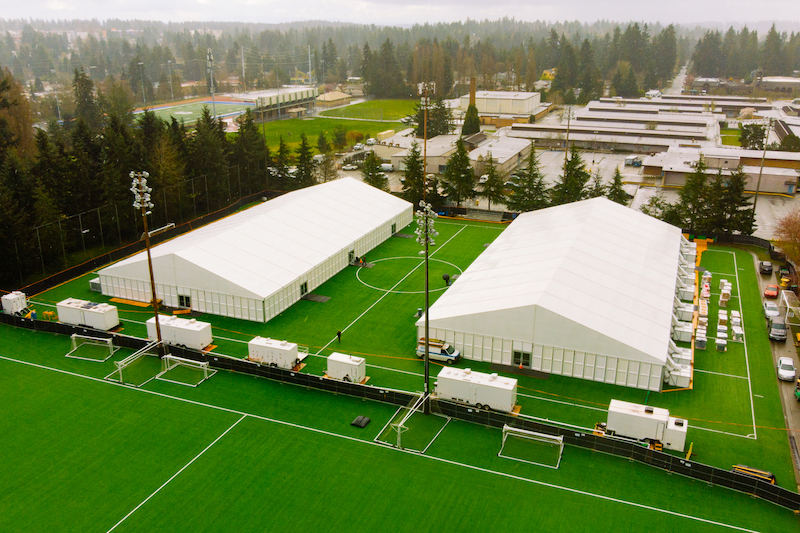About 18 months ago, officials from King County, Wash., which includes Seattle, approached DLR Group about developing housing solutions for the county’s homeless, who by one recent count totaled nearly 11,200, with just under half of those homeless unsheltered by conventional human habitude.
DLR Group, a national architecture and engineering firm, had been working on this project for a year when, on January 20, the first case of the coronavirus in the U.S. was reported in the state of Washington. As of April 4, Washington State’s Department of Health estimated that of the state’s 7,591 cases of illness and 310 fatalities attributed to COVID-19 infection, 2,898 cases and 200 deaths were in King County.
As part of its efforts to stem the virus’ spread, King County and DLR Group entered into an emergency contract. Working with the county and the builder Howard S. Wright (a division of Balfour Beatty), DLR Group developed a rapid-response solution to transform multiple sites into facilities equipped to quarantine patients who are incapable of self-quarantine, including the homeless.
The goal is to add 2,500 beds across 12 sites that range from converted motels and warehouses, to temporary structures built on parking lots and sports fields. As of this week, 800 beds will be online in four to six facilities, says Lori Coppenrath, DLR Group’s Justice and Civic Planner, who is spearheading this effort for her firm. She spoke with BD+C last Thursday.
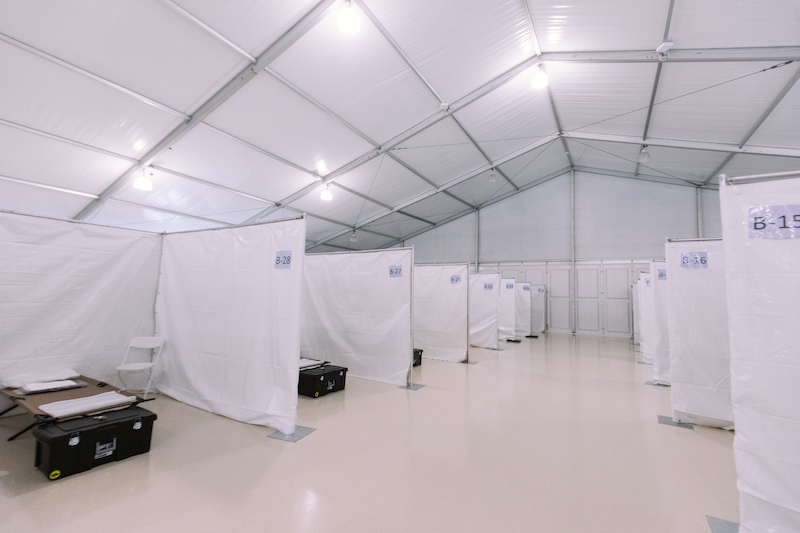
Some of the temporary structures are huge tents, inside of which are barracks-like beds.
One of the county’s goals is to move people out of hospitals who aren’t critical but still need a safe, monitored environment to recover fully. Each of these Assessment and Recovery Centers is typically conceived, studied, built, and permitted within two weeks, to get patients into them quickly.
Testing for the virus is actually done offsite, says Coppenrath, to avoid infecting anyone in a Center who is not currently sick or has tested negative to COVID-19. In developing the concept for the Centers, the building team and county devised flow diagrams for how patients and staff would move through the Centers. Those diagrams incorporate transportation needs with defined drop-off/pick-up areas, parking, and emergency and fire accessibility.
Coppenrath says this project has been an exercise in overcoming barriers. “These Centers are like field hospitals, so you have to figure out how to offer basic services to people who might be there a month or longer.” The design includes storage that minimizes the potential for contamination from other patients’ property. The Centers also need to provide areas where people can wash their hands frequently and shower. The facilities must be ADA-accessible.
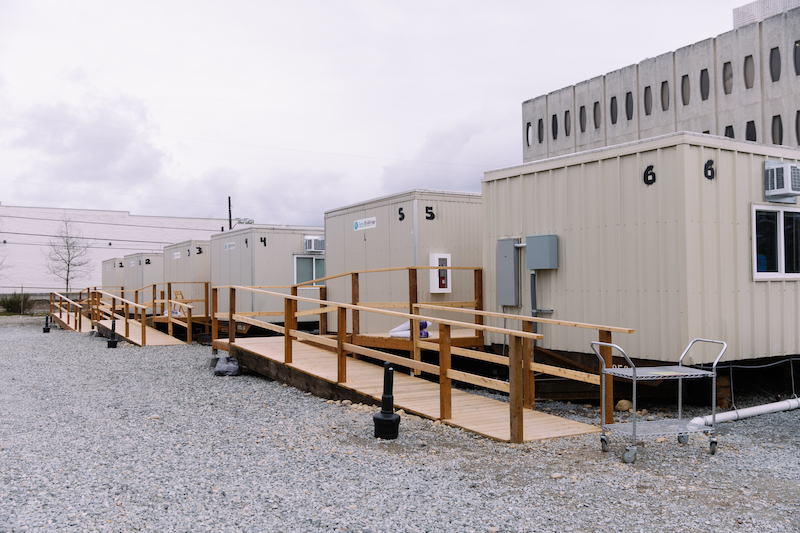
Some of the Assessment & Recovery Centers are ADA-compliant trailers, with individual living quarters that include kitchens, baths, and closet space.
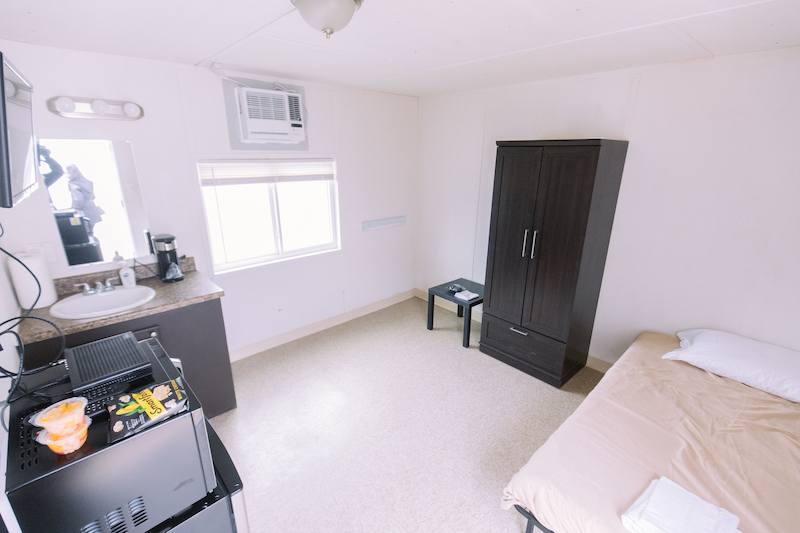
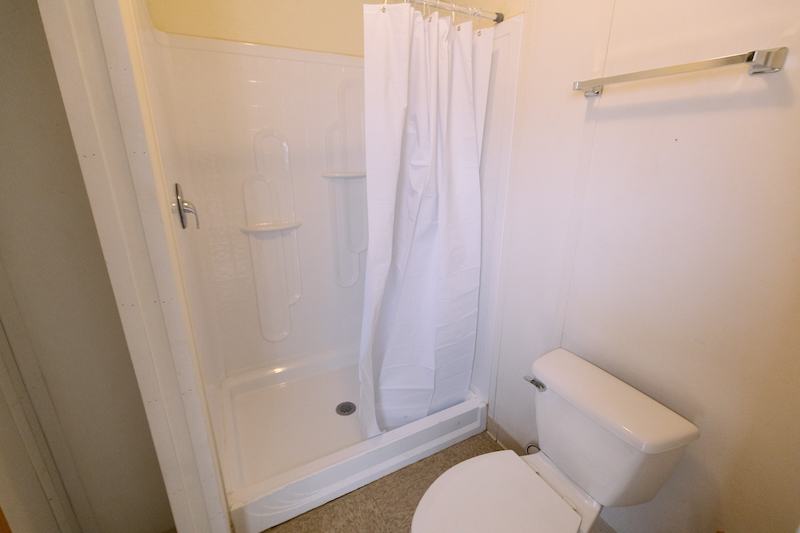
Food services and waste management are essential. The Centers also have to give patients something to do while they’re quarantined. “We thought it would be a good idea to give each patient an iPad, so they could watch movies and TV, but then you have to figure out how to recharge them and provide WiFi.”
Finding materials and components on short notice can also be challenging: Coppenrath notes that bathroom/shower trailers are “just not available anymore.”
On a positive note, Coppenrath says that DLR Group has been able to call upon “different levels of leadership” to lift roadblocks and keep things moving forward.
Related Stories
Augmented Reality | Jan 27, 2023
Enhancing our M.O.O.D. through augmented reality therapy rooms
Perkins Eastman’s M.O.O.D. Space aims to make mental healthcare more accessible—and mental health more achievable.
K-12 Schools | Nov 30, 2022
School districts are prioritizing federal funds for air filtration, HVAC upgrades
U.S. school districts are widely planning to use funds from last year’s American Rescue Plan (ARP) to upgrade or improve air filtration and heating/cooling systems, according to a report from the Center for Green Schools at the U.S. Green Building Council. The report, “School Facilities Funding in the Pandemic,” says air filtration and HVAC upgrades are the top facility improvement choice for the 5,004 school districts included in the analysis.
Giants 400 | Nov 14, 2022
4 emerging trends from BD+C's 2022 Giants 400 Report
Regenerative design, cognitive health, and jobsite robotics highlight the top trends from the 519 design and construction firms that participated in BD+C's 2022 Giants 400 Report.
Healthcare Facilities | Jun 20, 2022
Is telehealth finally mainstream?
After more than a century of development, telehealth has become a standard alternative for many types of care.
Coronavirus | May 20, 2022
Center for Green Schools says U.S. schools need more support to fight COVID-19
The Center for Green Schools at the U.S. Green Building Council released a new report detailing how school districts around the country have managed air quality within their buildings during the second year of the COVID-19 pandemic.
Industry Research | Mar 9, 2022
Survey reveals five ways COVID-19 changed Americans’ impressions of public restrooms and facilities
Upon entering the third year of the pandemic, Americans are not only more sensitive to germs in public restrooms, they now hold higher standards for the cleanliness, condition and technology used in these shared spaces, according to the annual Healthy Handwashing Survey™ from Bradley Corporation conducted in January.
Codes and Standards | Feb 21, 2022
New standard for ultraviolet germicidal irradiation
The Illuminating Engineering Society (IES) recently introduced the standard, ANSI/IES RP-44-21 Recommended Practice: Ultraviolet Germicidal Irradiation.
Coronavirus | Jan 20, 2022
Advances and challenges in improving indoor air quality in commercial buildings
Michael Dreidger, CEO of IAQ tech startup Airsset speaks with BD+C's John Caulfield about how building owners and property managers can improve their buildings' air quality.
Coronavirus | Jul 20, 2021
5 leadership lessons for a post-pandemic world from Shawmut CEO Les Hiscoe
Les Hiscoe, PE, CEO of Shawmut, a $1.5 billion construction management company headquartered in Boston, offers a 5-point plan for dealing with the Covid pandemic.
Resiliency | Jul 15, 2021
A new report urges federal investment in healthier buildings
The National Institute of Building Sciences also calls for code changes and greater cooperation between building owners and the AEC community.


